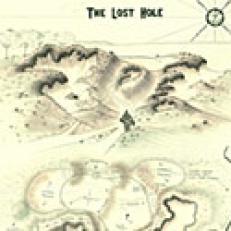GOLF & DESIGN Bunker Mentality
POT BUNKERRoyal St. George's / EnglandThe original art form, carved from rolling linksland by animals huddling against winter winds, further excavated by hackers over countless summers. Pot bunkers remind us that golf can be a cruel game.POT BUNKERRoyal St. George's / EnglandThe original art form, carved from rolling linksland by animals huddling against winter winds, further excavated by hackers over countless summers. Pot bunkers remind us that golf can be a cruel game.
COPWentworth / EnglandWhen man began digging bunkers, piling earth in front of the hole to form a "cop" (a ridge or mound) was an efficient way to add severity without digging too deep.COPWentworth / EnglandWhen man began digging bunkers, piling earth in front of the hole to form a "cop" (a ridge or mound) was an efficient way to add severity without digging too deep.
STRIPBellport / New YorkFirst utilized by C.B. Macdonald to generate fill for tees and greens, or as steps down extreme slopes, strip bunkers usually run parallel to a fairway or green.STRIPBellport / New YorkFirst utilized by C.B. Macdonald to generate fill for tees and greens, or as steps down extreme slopes, strip bunkers usually run parallel to a fairway or green.
CROSSTPC / BostonInvented more than 100 years ago, when golf was mostly a steeplechase game, cross bunkers are making a comeback as a means of forcing the game's long hitters to hold back off the tee.CROSSTPC / BostonInvented more than 100 years ago, when golf was mostly a steeplechase game, cross bunkers are making a comeback as a means of forcing the game's long hitters to hold back off the tee.
STACKED SODCarnoustie / ScotlandAlso invented more than 100 years ago on sandy links. Strips of sod were stacked in near-vertical fashion to keep bunker faces from collapsing. Known as revetted bunkers in the U.K.STACKED SODCarnoustie / ScotlandAlso invented more than 100 years ago on sandy links. Strips of sod were stacked in near-vertical fashion to keep bunker faces from collapsing. Known as revetted bunkers in the U.K.
GRASS-FACEDWesthampton / New YorkThe earliest American bunker style featured flat sand with an inclined face of clumpy fescue. Once Americans began routine irrigation of rough in the 1960s, grass faces posed mowing problems.GRASS-FACEDWesthampton / New YorkThe earliest American bunker style featured flat sand with an inclined face of clumpy fescue. Once Americans began routine irrigation of rough in the 1960s, grass faces posed mowing problems.
BULKHEADEDThe Golf Club / OhioOn a trip to Scotland in 1963, Pete Dye saw many clubs using railroad "sleepers" instead of stacked sod. Once home, he introduced abrupt changes to bunkers and water hazards.BULKHEADEDThe Golf Club / OhioOn a trip to Scotland in 1963, Pete Dye saw many clubs using railroad "sleepers" instead of stacked sod. Once home, he introduced abrupt changes to bunkers and water hazards.
MOON CRATERSLost Tracks / OregonPopularized back in the 1960s, oval bunkers -- carefully matched to the turning radius of a motorized sand rake -- are the easiest to maintain and mow around.MOON CRATERSLost Tracks / OregonPopularized back in the 1960s, oval bunkers -- carefully matched to the turning radius of a motorized sand rake -- are the easiest to maintain and mow around.
CAPES AND BAYS3 Creek Ranch / WyomingMore artistic than craters but not ridiculous to maintain, particularly if bays of sand accommodate power rakes.CAPES AND BAYS3 Creek Ranch / WyomingMore artistic than craters but not ridiculous to maintain, particularly if bays of sand accommodate power rakes.
WALKWAYSJohn's Island West / FloridaBunkers need to be hand-raked after every shot. Tom Fazio often elongates his capes so golfers never have to rake more than a few yards of sand.WALKWAYSJohn's Island West / FloridaBunkers need to be hand-raked after every shot. Tom Fazio often elongates his capes so golfers never have to rake more than a few yards of sand.
MACKENZIEAugusta National / GeorgiaThe artistic Alister Mackenzie primarily used a bunker style based on the ebb and flow of wind-swept sand dunes. His most famous, on the 10th fairway, lost its ragged edges decades ago.MACKENZIEAugusta National / GeorgiaThe artistic Alister Mackenzie primarily used a bunker style based on the ebb and flow of wind-swept sand dunes. His most famous, on the 10th fairway, lost its ragged edges decades ago.
THOMASBel-Air / CaliforniaGeorge C. Thomas Jr., an equally artistic Mackenzie contemporary, likewise tried to emulate sand dunes on his handful of California designs. His many jagged edges, once lost, are being restored.THOMASBel-Air / CaliforniaGeorge C. Thomas Jr., an equally artistic Mackenzie contemporary, likewise tried to emulate sand dunes on his handful of California designs. His many jagged edges, once lost, are being restored.
TRENT JONESMetedeconk National / New JerseyHis jigsaw-puzzle pieces capture the sand-dunes look, but many of the hard-to-maintain "feathered edges" have been chopped away.TRENT JONESMetedeconk National / New JerseyHis jigsaw-puzzle pieces capture the sand-dunes look, but many of the hard-to-maintain "feathered edges" have been chopped away.
THICK LIPG.C. of San Francisco / CaliforniaLabor-intensive jagged edges are making a comeback, as are short, abrupt vertical edges that some designers call "heavy eyebrows."THICK LIPG.C. of San Francisco / CaliforniaLabor-intensive jagged edges are making a comeback, as are short, abrupt vertical edges that some designers call "heavy eyebrows."
SCULPTUREDAthletic Club / AtlantaThe goal is to mesh artistry and playability with practical maintenance. But with capes and bays as well as jagged edges, is it a Henry Moore sculpture or a kitchen sink?SCULPTUREDAthletic Club / AtlantaThe goal is to mesh artistry and playability with practical maintenance. But with capes and bays as well as jagged edges, is it a Henry Moore sculpture or a kitchen sink?
FLASHED SANDThe Vintage Club / CaliforniaTom Fazio uses "plaster sand" to achieve near-vertical faces; balls bounce off and roll to the bottom. Most architects use softer sand over a fiber drainage mat to create steep slopes that won't wash away.FLASHED SANDThe Vintage Club / CaliforniaTom Fazio uses "plaster sand" to achieve near-vertical faces; balls bounce off and roll to the bottom. Most architects use softer sand over a fiber drainage mat to create steep slopes that won't wash away.
BLOW OUTSand Hills / NebraskaBill Coore and Ben Crenshaw gouged holes into sand hills, then let winter winds shape them into natural bunkers. Problem was, asBLOW OUTSand Hills / NebraskaBill Coore and Ben Crenshaw gouged holes into sand hills, then let winter winds shape them into natural bunkers. Problem was, as
HYBRIDDakota Dunes / SaskatchewanThe most popular style today is a hybrid, meant to look like a "blow out" bunker but with capes, bays and edges precisley carved and stabilizedHYBRIDDakota Dunes / SaskatchewanThe most popular style today is a hybrid, meant to look like a "blow out" bunker but with capes, bays and edges precisley carved and stabilized
RAGGED AND WOOLLYBlack Sheep / IllinoisAnother hybrid version inspired by Sand Hills, but planted in an old cornfield, is merely a jagged-edge cop bunker with tall, thick, native grasses substituting for an earthen cop.RAGGED AND WOOLLYBlack Sheep / IllinoisAnother hybrid version inspired by Sand Hills, but planted in an old cornfield, is merely a jagged-edge cop bunker with tall, thick, native grasses substituting for an earthen cop.
EROSIONBayside / NebraskaThe newest style of sand bunker imitates the narrow channels and rivulets created when streams of water erode hillsides. But these miniature canyons take just days, not eons, to create.EROSIONBayside / NebraskaThe newest style of sand bunker imitates the narrow channels and rivulets created when streams of water erode hillsides. But these miniature canyons take just days, not eons, to create.
BEACHKittansett / MassachusettsThe original was an ocean beach at Kittansett. The concept was reintroduced in the 1970s by Arnold Palmer, who recommended a bunker blend directly into a water hazard.BEACHKittansett / MassachusettsThe original was an ocean beach at Kittansett. The concept was reintroduced in the 1970s by Arnold Palmer, who recommended a bunker blend directly into a water hazard.
BUFFERLong Point / FloridaLong strip bunkers protect balls from bounding into water hazards. Critics insist these are architectural double negatives, one hazard negating the other.BUFFERLong Point / FloridaLong strip bunkers protect balls from bounding into water hazards. Critics insist these are architectural double negatives, one hazard negating the other.
WASTELong Bay / South CarolinaWhile building Harbour Town, Pete Dye covered a sewage ("waste") pit with coquina shells. Gritty imitations followed, along with local rules allowing the grounding of a club in waste bunkers.WASTELong Bay / South CarolinaWhile building Harbour Town, Pete Dye covered a sewage ("waste") pit with coquina shells. Gritty imitations followed, along with local rules allowing the grounding of a club in waste bunkers.
TRANSITIONDesert Highlands / ArizonaTo avoid the harsh transition between lush rough and rocky desert, in 1982 Jack Nicklaus created massive stretches of maintained sand to give high-handicappers a break.TRANSITIONDesert Highlands / ArizonaTo avoid the harsh transition between lush rough and rocky desert, in 1982 Jack Nicklaus created massive stretches of maintained sand to give high-handicappers a break.
ART DECOTullymore / MichiganThe singular style of architect Jim Engh, whose bays of sand and noses of turf provide a soothing comfort.ART DECOTullymore / MichiganThe singular style of architect Jim Engh, whose bays of sand and noses of turf provide a soothing comfort.













